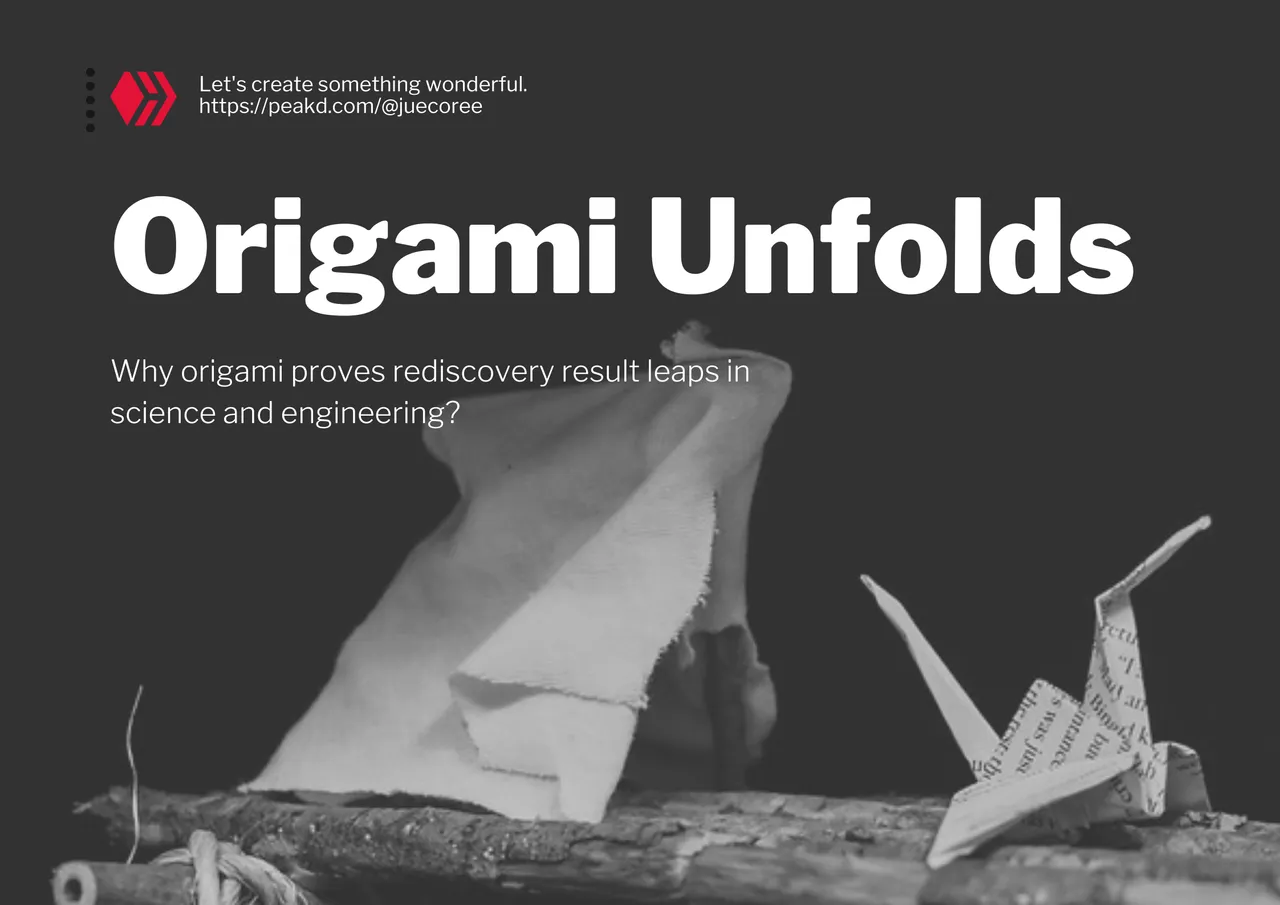
Cultures come up with creative ways to do things, and one of those is about papercraft. We can trace back its origin to ancient China, which generally evolves as other cultures adopted, including but not limited to the French paper–mâché. One of the popular creative practices that extensively influence the globe is origami, the art of paper folding. We can closely relate origami to Japan's culture, which has roots in China and Europe too.
Traditionally, we create origami by folding a sheet of paper to sculpt it into our desired form without needing to glue, tape, or mark it. Origami often featured flowers, birds, and anything related to nature. Japanese artists' practice includes strategically cut the sheet of paper. So it is not just folding as we know it. But it steams more popular through folds, which we attribute as authentic form. Europe doesn't shy out in paper folding as it is known for its unique napkin folding that streams an array of abstract patterns, much like origami.
For most of us, origami is a hobby or an artistic expression. In contrast, engineers learned to adapt origami as an invaluable modeling approach to real-world problems like technology for space exploration. Origami enables us to curve, fold and stretch to create structures to overcome a self-assembling problem in engineering. Origami presents unique benefits due to its potential to change material forms without affecting volume and weight.
When we fold a material, we increase the material usefulness and adaptability, similar to how we can change origami from a cane to a frog. Studying folding techniques in origami enables us to make structures that fold and unfold efficiently and effectively from one form to another. Origami structures open us to new solutions for design problems in architecture, industrial design, medicine, and engineering, to name a few. We often think of origami as an art form, but we can't deny that revolutionizing various disciplines to solve the taxing design problem, like fitting sizable objects into small spaces.

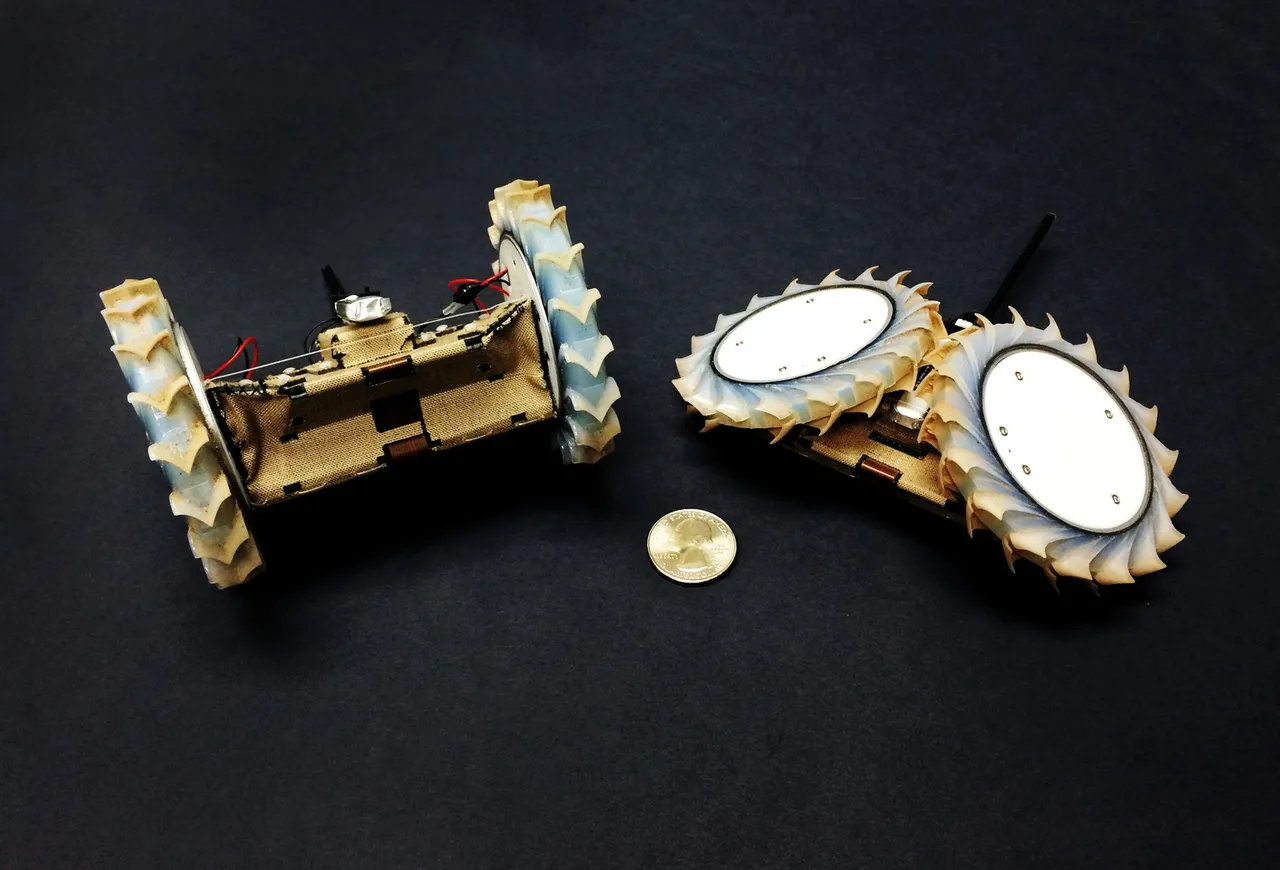
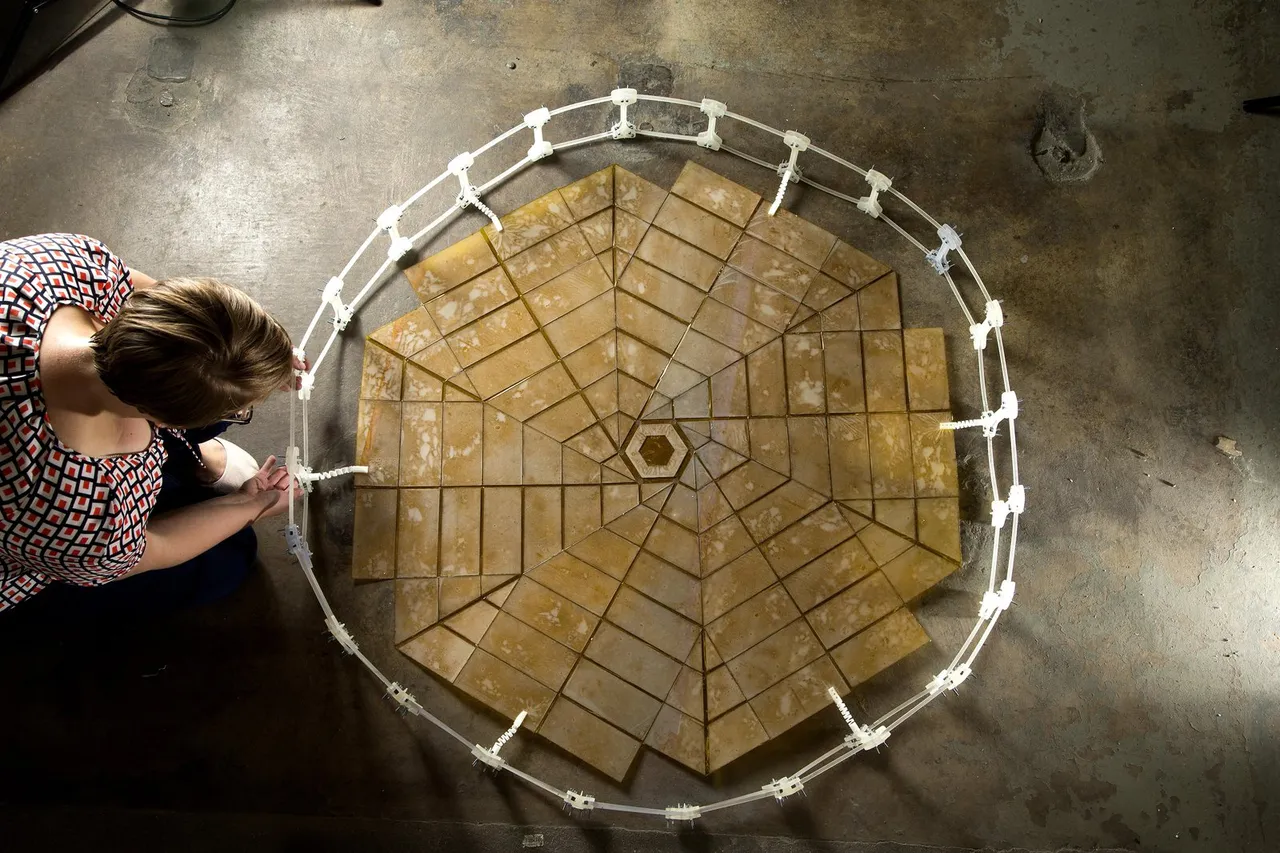
Origami in Space and Robotics
NASA pioneered crafting space technology that takes some inspiration from origami. They believed to be provable, to bring large structures in one rocket, applying origami into its design. Origami can fold and compresses materials to pack them to the possible smallest volume. It allows us to organize large objects, single or multiple, to fit in one rocket to speed up building structures in space.
NASA's Starshade project aimed to bring a baseball-diamond-sized space telescope in space that folds to suit in one rocket. The Starshade unfolds to resemble a blooming flower as it transforms from an occulter to an independent telescope. It will carry out some observations and take pictures of exoplanets for the Exoplanet Exploration Program of NASA. Once deployed, Starshade will give scientists to look at planets around brighter stars.
Pop-Up Flat Folding Explorer Robot (PUFFER) is another project of NASA that takes some inspiration from origami. It can reach smaller spaces that are unreachable by other robots. PUFFER can fold its body so that it can roll out to smaller and narrow spaces. It will help scientists examine the topography that gives better insight into our planet and the other planets. Both NASA projects clearly show the versatility and functionality of origami-inspired structures and give us a clearer picture that origami is more than an art.
While robots, in general, can do tasks that we can't do, robots can't have human instinct. Material folding inspired by origami enables a robot to act with precision and accuracy even with limited spaces, which are critical features in self-folding robots. National Science Foundation designed a solar array compacted to 9 feet but deployed to reach 82 feet across space, proving the applicability of origami. Howell and his student design a surgical robot, Oriceps. The Oriceps is a tiny surgical grabber that takes some inspiration from origami ideas, called chompers.
Ichiro Hagiwara pioneered origami engineering and build a printer prototype that can mass-produce origami structures. The origami printer successfully mimics complex origami structures using a sheet of paper. Hagiwara developed an origami-inspired shock absorption for cars, with an energy absorption rate of 40%. He also went to design the lightest foldable helmet and conceptualize foldable drinking bottles. This ingenuity exemplifies the extended application of origami and origami engineering. Origami presents us with a new approach to create structures with better strength, size, and simplicity.
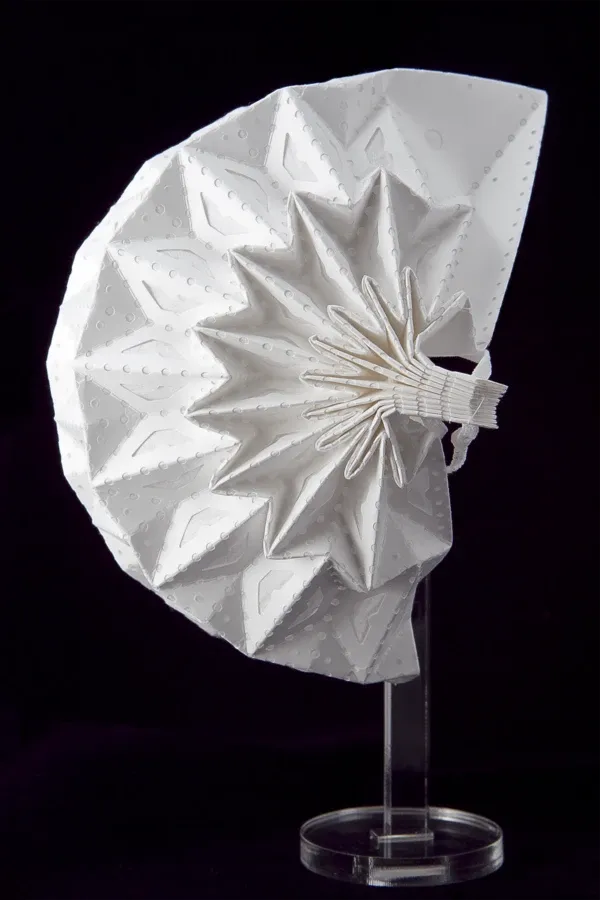
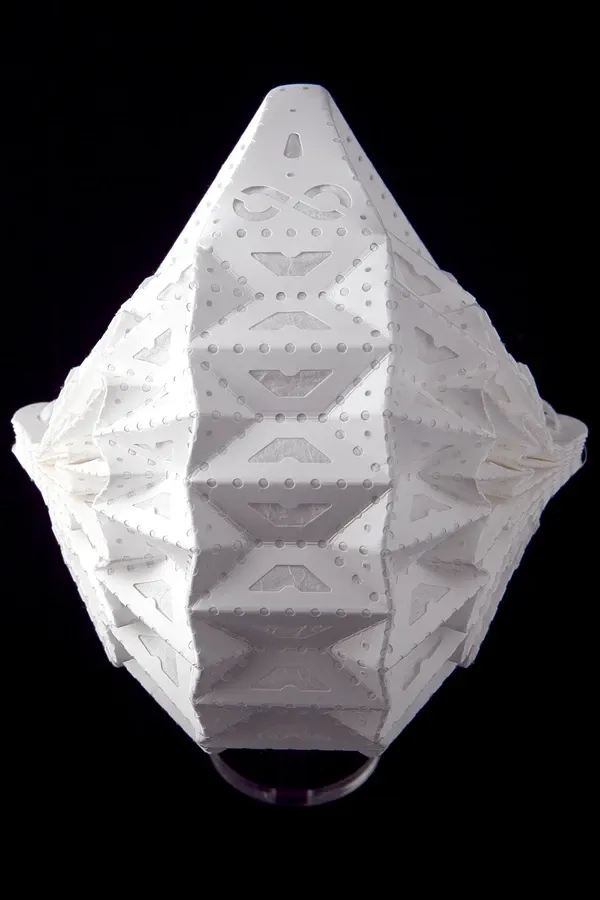
Origami redesign the Face Mask
Richard Gordon describes origami as a piece of music that individual folds and can make paper sing when joined. Origami can become a flapping bird, a floating boat, or a blooming flower. In the pandemic, Gordon makes an origami-inspired face mask. With the ongoing pandemic, mask designers created face masks to better fit, function, and even resonate with the wearer's fashion. When improperly designed, face masks have a gap around the nose and cheeks, which returns a lesser percentage of protection and an entry-exit point for the virus. Origami shines to address in closing this gap.
Gordon's Airgami has an intricate design interlocking paper valleys to close the gap in the nose and checks. Airgami expands when pulled due to an auxetic material, which is unlike rubber that narrows when stretch. The mask stays flush in our face even we are in motion. Hence it expands; it improves the wearer's comfort, especially those with perennial rhinitis. The folds of Airgami offer ease of breathing due to an increase of the surface air passing through the mask. It's like ventilating through a pipe rather than in a straw since it has larger filters than common N95s.
Origami makes us rethink the mask design, and with the ongoing pandemic, it became timely. An origami-inspired face mask is a cut above the regular one. It improves the breathability of face masks, especially with those people with perineal nose allergies and discomfort wearing masks. We can say that several people hardwire to find origami beautiful. It is ironic to say, quite peculiar, but origami can save a life.

Origami and the Future of Design
We can say that origami is elegant and functional. We can't limit it to art alone. Origami allows us to bend, fold, and stretch objects to solve a self-assembling challenge that will come to us. Origami offers distinct advantages owing to its ability to change material shapes while maintaining volume and weight. With its remarkable versatility and functionality, origami is posing to revolutionize engineering as what we knew it. Some of us may see origami as art for those who can't draw. Origami holds a genuinely out-of-this-world potential.
We always celebrate groundbreaking discoveries and often neglect rediscovery, putting it far back our science appreciation cabinet. Origami serves us a humble reminder that the old concept that became knick-knacks over time holds some grounds in leaping our technology forward. A compassionate glance at our unique potential may release the ultimate frontier within all of us, as what we get from the old art of paper folding. Our design problems perhaps may have solutions sprouted with mere simplicity.
Readings
Micholas Turner, Bill Goodwine, and Mihir Senm, A review of origami applications in mechanical engineering, SAGE Journals
John Varrasi, How the Future of Origami Engineering is Unfolding, Live Science
Maya Wei-Haas, We need better face masks—and origami might help, National Geography
Jim Morrison, How Origami Is Revolutionizing Industrial Design, Smitsonian
Photo Credit:
NASA's Starshade, PUFFER Robot, and Solar Array Project | Photo Courtesy NASA/JPL-CalTech (Image Library)
Airgami, a origami-inspired face mask designed by Richard Gordon | Photo from Richard Gordon/Airgami.life
Starshade Concept using Paper Origami | Photo Courtesy NASA/JPL-CalTech (Image Library)
